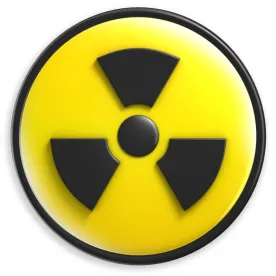Since 2010, the Nuclear Regulatory Commission (NRC) Staff has been working on revisions to 10 C.F.R. Part 61, Licensing Requirements for Land Disposal of (Low-Level) Radioactive Waste. The original effort was intended to focus on potential impacts from anticipated disposal of large quantities of depleted uranium (DU), which is considered a “unique waste stream,” from uranium enrichment facilities. But over the course of the last seven years, the Staff’s concerns over other possible unique waste streams grew, and so did the scope of the proposed changes to Part 61.
The Staff has published various versions of the proposed revisions, most recently in 2016 in SECY-16-0106, Final Rule: Low-Level Radioactive Waste Disposal. There the Staff proposed—among other things—a new compliance period of 10,000 years after closure, requirements for an “inadvertent intruder analysis” also for a period of 10,000 years after closure, elimination of a grandfathering provision, and significant expansion of defense-in-depth analyses requirements. A 1,000-year compliance period could also be used, but only if supported by an adequate “technical rationale.”
The Staff’s proposals have been widely criticized, including by the Advisory Committee on Reactor Safeguards (ACRS) and various industry groups, as significantly increasing regulatory burden without sufficient justification. For example, in a 2014 letter to the NRC chairman, the ACRS stated, “We do not agree that a compliance period of 10,000 years is necessary, practical, reasonable, or consistent with Commission direction to establish a compliance period for the ‘reasonably foreseeable future.’” Further, in 2015 comments on the proposed rule, one industry group stated that there is no information to suggest that disposal of low-level radioactive waste pursuant to the current regulatory framework is unsafe or is not adequately protective of public health and safety and the environment. Despite the widespread criticism of the need for and scope of the proposed revisions, the Staff maintained the essential elements of its proposal.
But on September 8, 2017, the Commission in SRM-SECY-16-0106 directed several substantive and helpful changes to the draft final rule and also required its subsequent republication as a “supplemental proposed rule” for another 90-day public comment period. Importantly, the Commission directed the Staff to make the following revisions:
-
Reinstate the use of a case-by-case basis (i.e., the “grandfather provision”) for applying new requirements to only those sites that plan to accept large quantities of DU for disposal.
-
Reinstate the 1,000-year compliance period and also apply the 1,000-year compliance period to the inadvertent intruder performance objective.
-
Narrow the defense-in-depth analysis solely to providing additional assurance in mitigating the effects of large uncertainties that are identified during the performance assessment.
-
Be informed by broader, reasonably foreseeable costs and benefits from the proposed changes, including pass-through costs to waste generators and processors.



 />i
/>i

